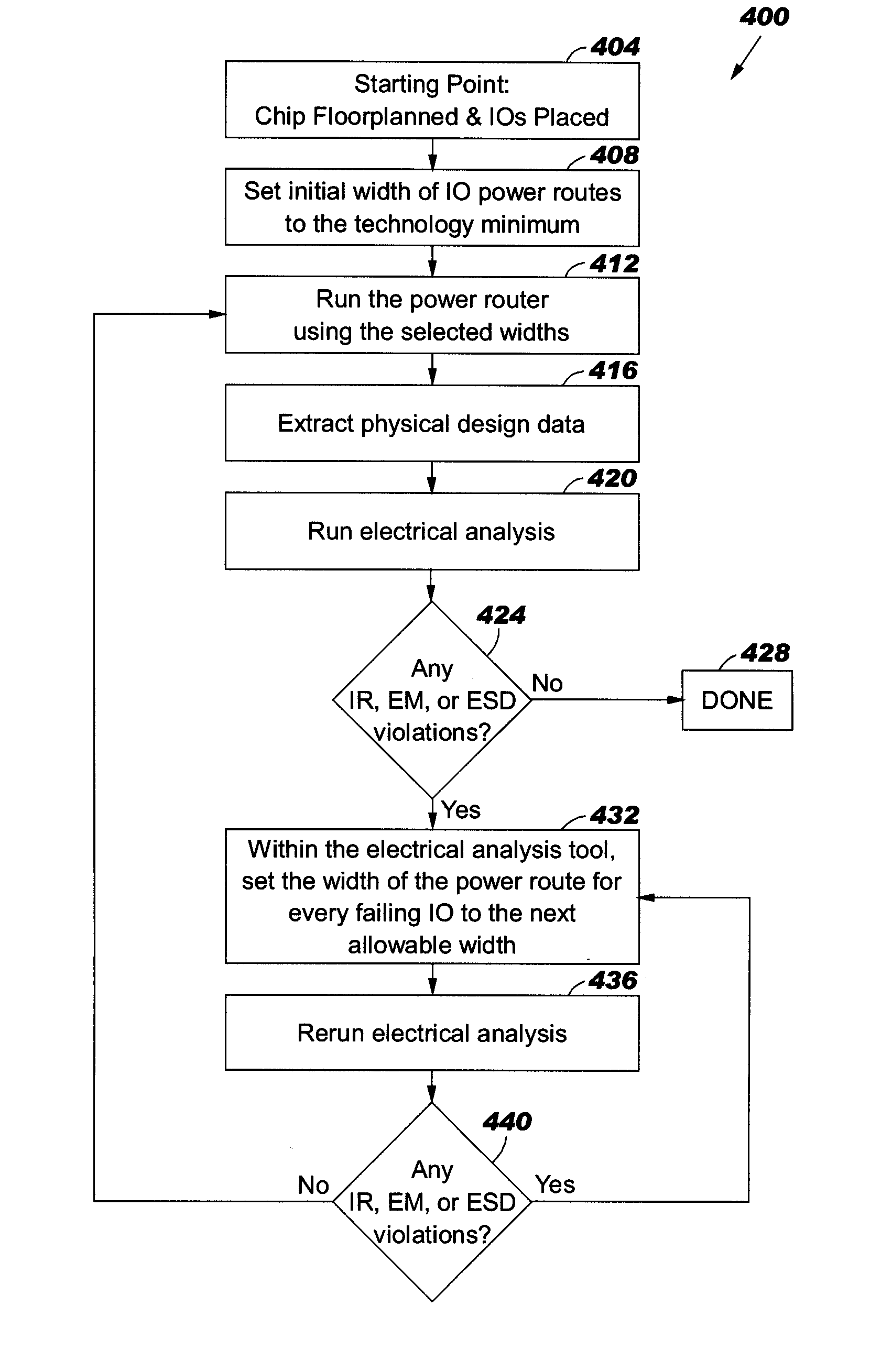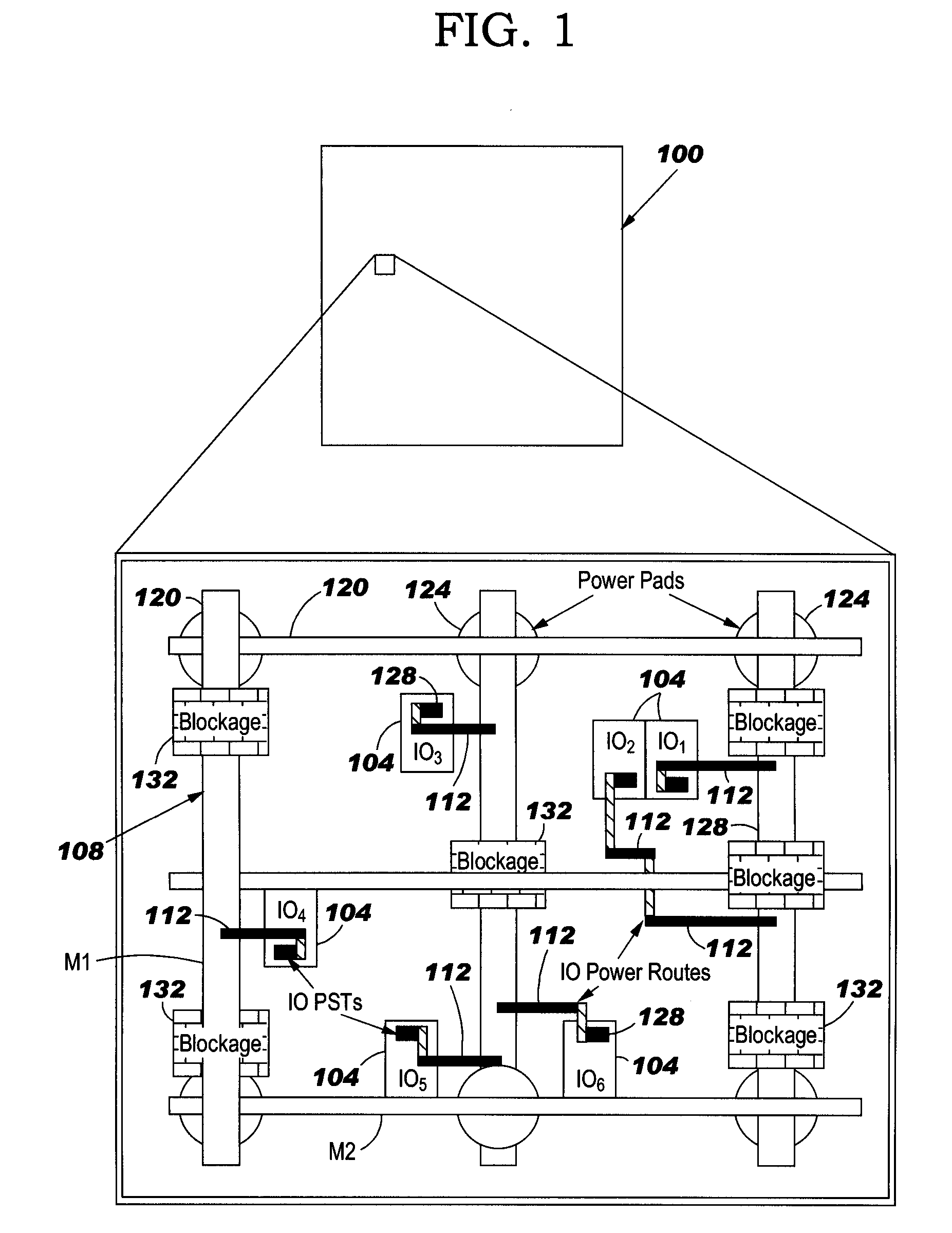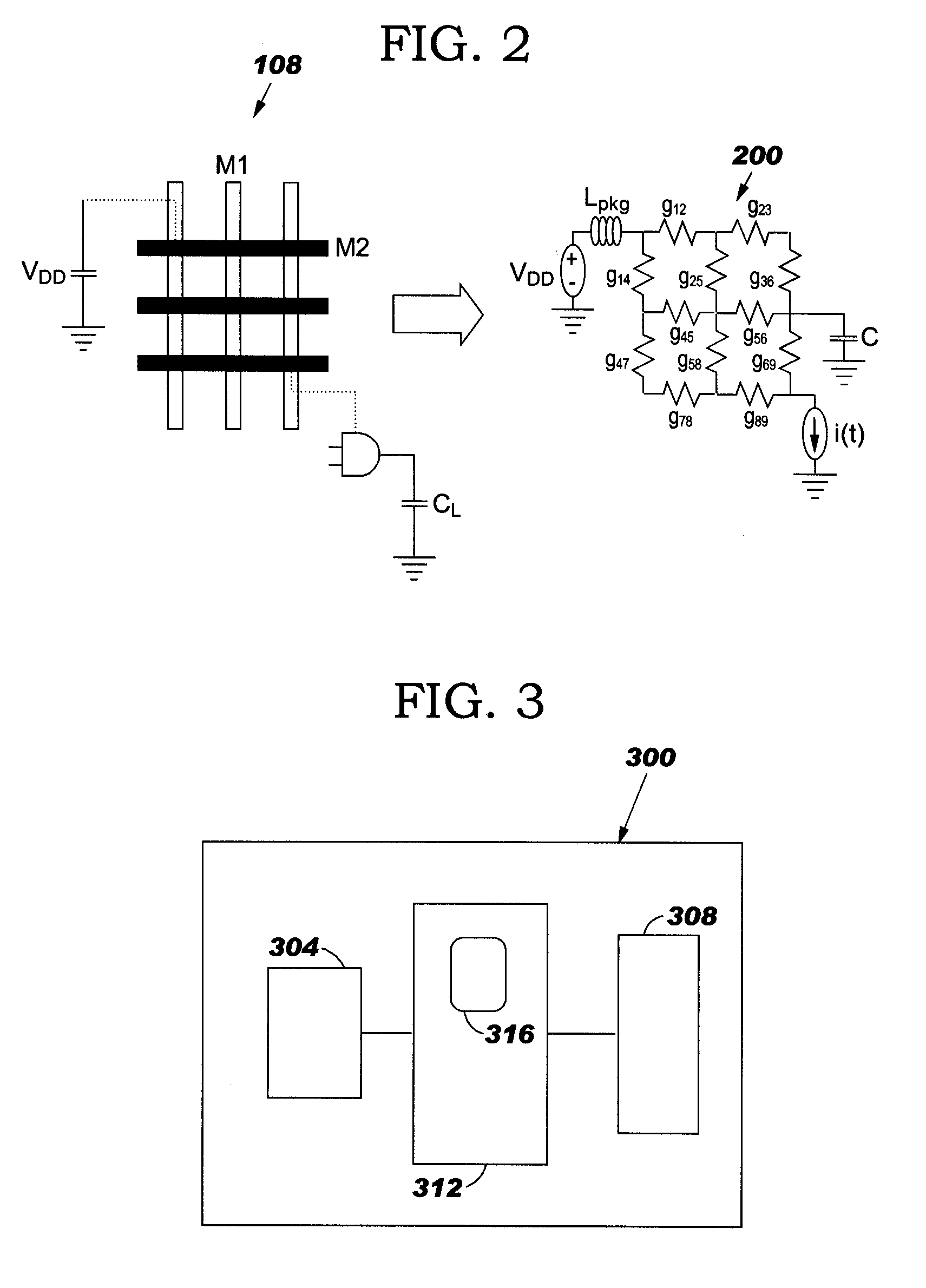I/O circuit power routing system and method
a circuit power routing and circuit technology, applied in the field of integrated circuits, can solve the problems of increasing the dynamic power dissipation of the chips, increasing the chip power dissipation, and increasing the static power, so as to increase the dynamic power, increase the static power, and increase the dynamic power
- Summary
- Abstract
- Description
- Claims
- Application Information
AI Technical Summary
Benefits of technology
Problems solved by technology
Method used
Image
Examples
example
[0042]In this example, four test cases, referred to as TC1, TC2, TC3, and TC4, are considered in connection with implementing an integrated power routing method of the present invention, e.g., method 400, in connection with IR requirements. However, those skilled in the art will readily understand the modifications necessary to implement this method in connection with EM and ESD requirements as well.
[0043]The number of I / O circuits in each of test cases TC1, TC2, TC3, and TC4 is about 150 I / O circuits, as shown in Table I.
[0044]
TABLE INo. of Failing I / O CircuitsNo. of I / Ovs. Power Route WidthTest CaseCircuits6 μm8 μm12 μm16 μmTC1159261030TC2152291000TC3157251041TC4145261120
[0045]The supply voltage is 1.5V for each of test cases TC1, TC2, TC3 and TC4. The other inputs for this example are the currents drawn by the various I / O circuits. For purposes of this example, it is assumed that each I / O circuit is drawing 30.0 mA of current from the power supply. In practice, the current demand...
PUM
 Login to View More
Login to View More Abstract
Description
Claims
Application Information
 Login to View More
Login to View More - R&D
- Intellectual Property
- Life Sciences
- Materials
- Tech Scout
- Unparalleled Data Quality
- Higher Quality Content
- 60% Fewer Hallucinations
Browse by: Latest US Patents, China's latest patents, Technical Efficacy Thesaurus, Application Domain, Technology Topic, Popular Technical Reports.
© 2025 PatSnap. All rights reserved.Legal|Privacy policy|Modern Slavery Act Transparency Statement|Sitemap|About US| Contact US: help@patsnap.com



